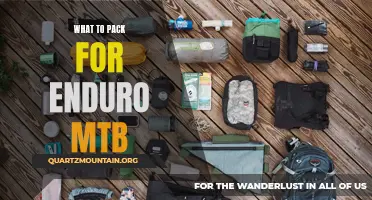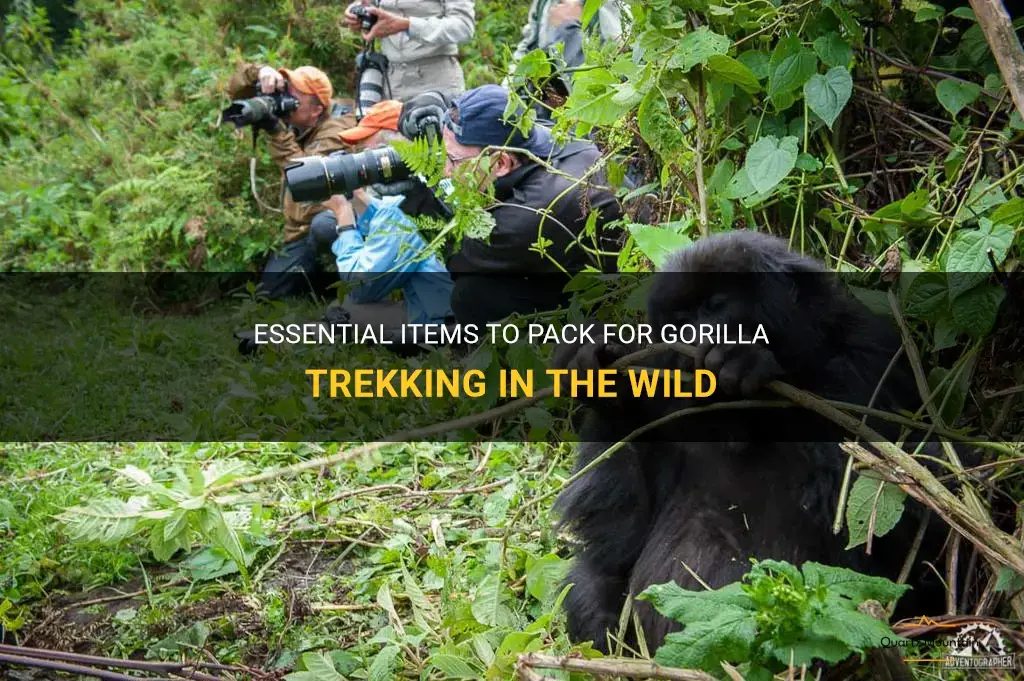
Gorilla trekking in the wild is a thrilling and unique adventure that allows travelers to come face to face with these majestic creatures in their natural habitat. However, embarking on such an expedition requires careful preparation and packing of essential items to ensure a safe and successful trek. From sturdy hiking boots to warm clothing and insect repellent, this article will guide you through the must-have items for your gorilla trekking journey, ensuring an unforgettable experience in the heart of the wild.
What You'll Learn
- What are the essentials that I need to pack for a gorilla trekking adventure?
- Are there any specific clothing items that are recommended for gorilla trekking in terms of comfort and functionality?
- What kind of footwear is recommended for a gorilla trekking expedition?
- Are there any specific medical supplies or equipment that I should include in my packing list for gorilla trekking?
- Are there any restrictions or guidelines on what can be packed for a gorilla trekking trip in terms of weight or size?

What are the essentials that I need to pack for a gorilla trekking adventure?
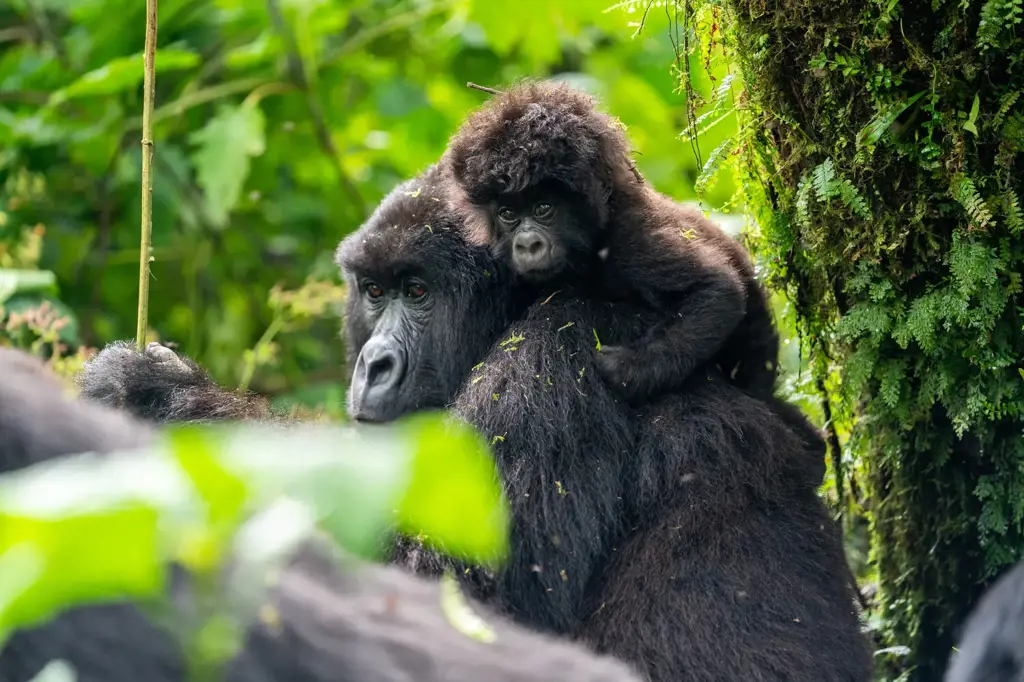
Gorilla trekking is an exhilarating experience that requires proper preparation and packing. These majestic creatures can only be found in a few countries, including Rwanda, Uganda, and the Democratic Republic of Congo. Whether you are planning a one-day trek or a longer expedition, it is essential to pack the right gear and essentials for a successful adventure. Here are some of the essentials that you should consider:
- Sturdy Hiking Boots: Gorilla trekking involves traversing through dense forests, muddy terrains, and steep slopes. It is crucial to have a pair of comfortable and sturdy hiking boots that provide good traction and ankle support. These boots will help you navigate the challenging terrain and protect your feet from potential injuries.
- Lightweight Clothing: When trekking in the gorilla habitat, it is advisable to wear lightweight and breathable clothing that can dry quickly. Choose long-sleeved shirts and lightweight pants to protect yourself from scratches, insect bites, and the sun. Additionally, pack a waterproof jacket or poncho as rain can be unpredictable in these regions.
- Backpack: A good quality backpack is essential to carry your belongings during the trek. Choose a backpack that is durable, comfortable, and has multiple compartments to organize your items. It should be spacious enough to hold your water bottle, snacks, camera, and other essentials.
- Water and Snacks: Trekking in the gorilla habitat can be physically demanding, and it is important to stay hydrated and energized. Carry an adequate amount of water in a reusable water bottle or a hydration pack. Pack lightweight and non-perishable snacks such as energy bars, dried fruits, and nuts to keep your energy levels up during the trek.
- Insect Repellent: Mosquitoes and other insects can be prevalent in the gorilla habitat. Protect yourself from mosquito-borne diseases by applying an insect repellent with at least 20% DEET. It is also advisable to wear long-sleeved clothing and pants to minimize exposure to biting insects.
- Camera and Binoculars: Gorilla trekking is a once-in-a-lifetime experience, and you would want to capture the memories. Bring a good quality camera with extra batteries and memory cards to capture stunning photographs. Binoculars are also handy to observe the gorillas from a distance and appreciate their natural behavior.
- Medical Kit: It is essential to carry a basic medical kit that includes items such as band-aids, antibiotic ointment, pain relievers, anti-diarrheal medication, and any prescription medications you may require. Remember to consult with your healthcare provider before traveling to ensure you have the necessary vaccinations and medications.
- Cash and Identification: While trekking in remote areas, it is always advisable to carry some cash in local currency for emergencies and tips. Additionally, ensure that you have a copy of your passport, visa, and any permits required for gorilla trekking.
It is important to note that the regulations and requirements for gorilla trekking may vary in different countries. Always check with the local authorities and tour operators for the most up-to-date information and pack accordingly. By packing the right essentials, you can have a safe, comfortable, and memorable gorilla trekking adventure.
Essential Items to Pack for a Dirty Weekend Escape
You may want to see also

Are there any specific clothing items that are recommended for gorilla trekking in terms of comfort and functionality?
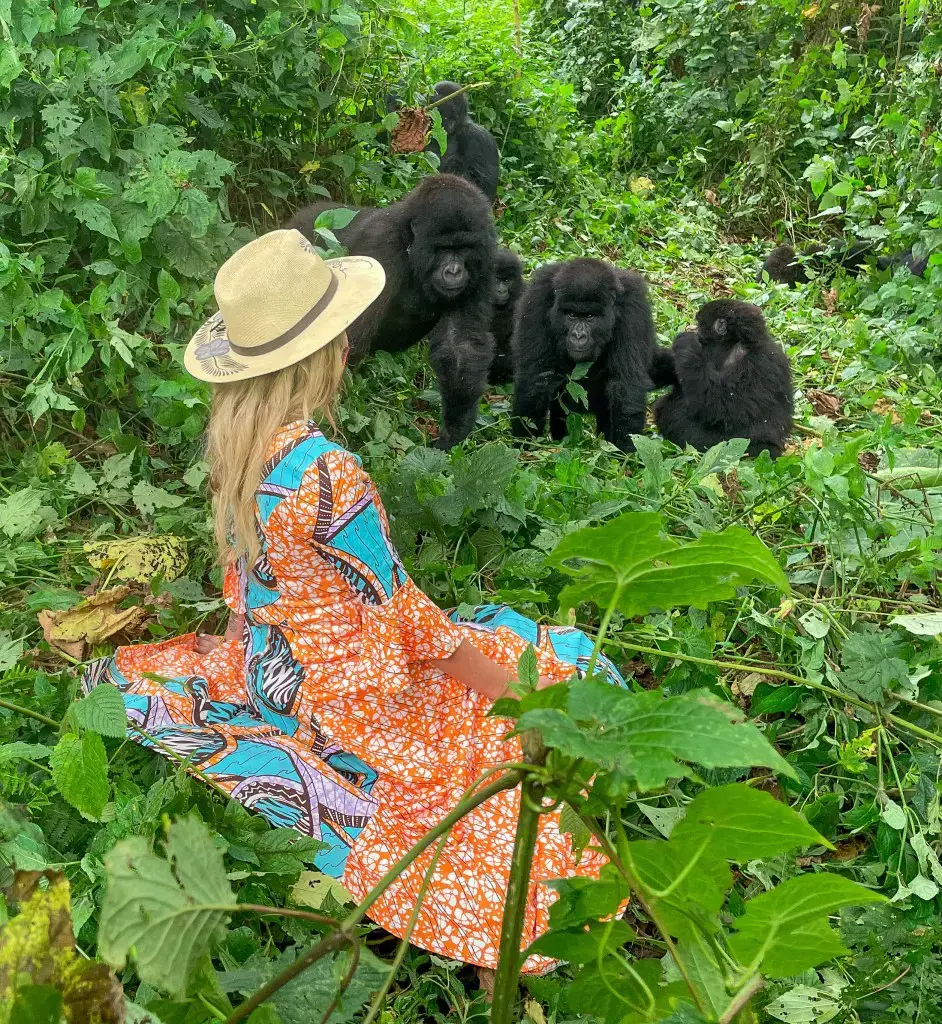
When it comes to gorilla trekking, it is important to choose clothing items that provide both comfort and functionality. The terrain in which gorillas are found can be challenging, with dense forests and uneven ground. Therefore, it is crucial to wear clothing that allows for ease of movement while also providing protection against the elements.
One of the most important clothing items to consider for gorilla trekking is a good pair of hiking boots. These boots should have sturdy soles and ankle support to help navigate through the rugged terrain. Additionally, they should be waterproof and breathable to keep your feet dry and comfortable throughout the trek.
Another crucial clothing item is long pants. Opt for lightweight pants that are made of breathable and quick-drying material. This will help keep you cool and dry, especially in humid environments. Additionally, pants provide protection against bugs, thorny bushes, and other potential hazards found in the jungle.
Layering is also key when it comes to gorilla trekking. The weather in gorilla habitats can be unpredictable, so it is important to be prepared for both hot and cold conditions. Start with a moisture-wicking base layer to keep you dry. This can be a lightweight, long-sleeved shirt made of synthetic materials or merino wool. Over this, add a lightweight fleece or sweater for insulation. Finally, top it off with a waterproof and breathable jacket to protect you from rain or wind.
In terms of headwear, a hat is essential to protect you from the sun. Choose a wide-brimmed hat that covers your face and neck to minimize exposure to harmful UV rays. Additionally, a lightweight and breathable buff or bandana can be useful to protect your face from dust, insects, and cold winds.
As for gloves, they can provide both protection and comfort during gorilla trekking. Opt for lightweight and flexible gloves that allow for dexterity so you can easily hold onto branches or rocks. Additionally, gloves can help protect your hands from scratches, thorns, and other potential hazards.
Lastly, don't forget about socks. Choose moisture-wicking socks made of wool or synthetic materials to prevent blisters and keep your feet dry. It is also a good idea to bring an extra pair of socks in case yours get wet or sweaty during the trek.
In summary, when it comes to gorilla trekking, it is important to choose clothing items that provide comfort and functionality. Opt for sturdy hiking boots, lightweight and breathable pants, moisture-wicking base layers, insulating layers, waterproof jackets, sun-protective hats, gloves for protection, and moisture-wicking socks. By choosing the right clothing, you'll be better prepared to explore the gorilla habitats while ensuring your comfort and safety.
The Best Materials for Effective Wound Packing: A Comprehensive Guide
You may want to see also

What kind of footwear is recommended for a gorilla trekking expedition?
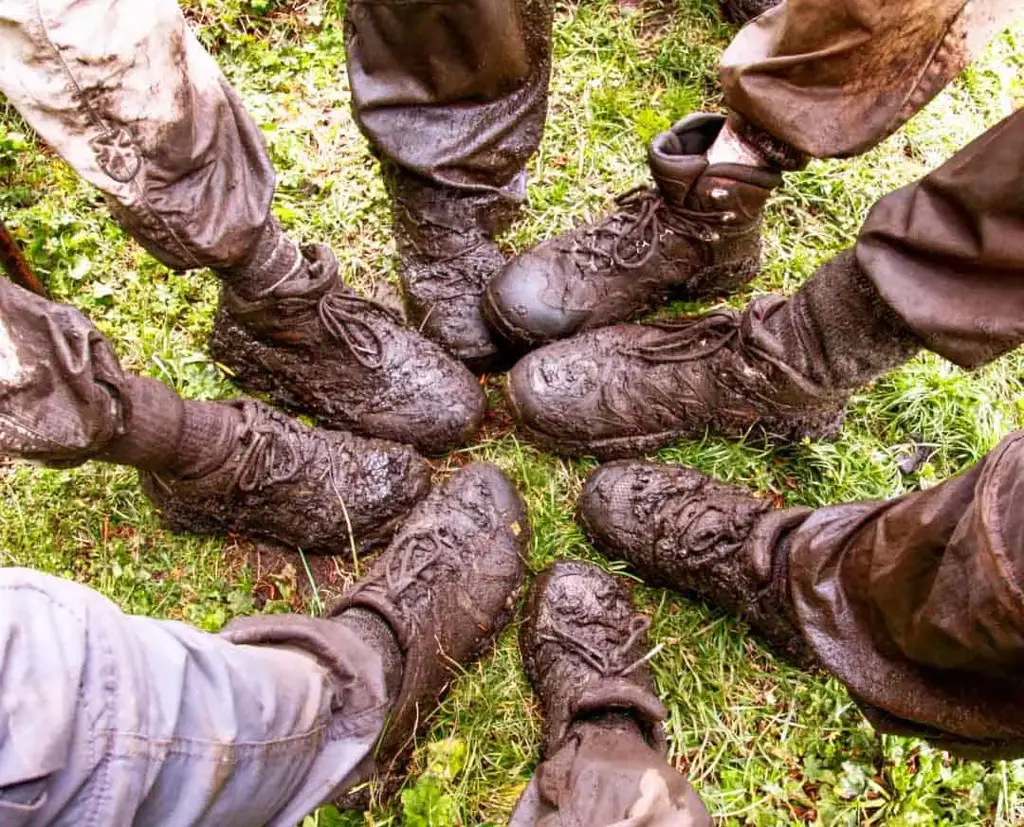
Gorilla trekking is a thrilling and once-in-a-lifetime experience that allows you to observe these magnificent creatures in their natural habitat. However, to fully enjoy and safely navigate through this adventure, it is crucial to have the right footwear. Choosing the appropriate footwear for a gorilla trekking expedition is not only important for your comfort but also for the preservation of the fragile ecosystem.
When selecting footwear for a gorilla trekking expedition, it is essential to prioritize comfort, durability, and protection. Here are some key factors to consider:
- Sturdy and Waterproof: The trek to locate gorillas typically involves traversing through dense vegetation, muddy trails, and uneven terrain. Therefore, it is imperative to wear sturdy, waterproof shoes or boots that provide excellent traction and ankle support. Look for options made of durable materials, such as waterproof leather or synthetic fabrics.
- Comfortable Fit: Comfort is crucial during long treks, so it is advisable to choose shoes that offer a snug yet comfortable fit. It is recommended to try on the shoes before the trek to ensure they provide the necessary support and do not cause any discomfort or blisters. Remember, you might be walking for several hours, so opt for footwear that will not cause unnecessary pain or discomfort.
- Closed-Toe Design: Gorilla trekking often involves traversing into remote areas with challenging terrain, including thorny bushes and rocks. To protect your feet from potential injuries, opt for closed-toe shoes or boots that provide ample protection for your toes and feet. This will minimize the risk of stubbing or injuring yourself during the trek.
- Breathable and Lightweight: While robust protection is important, it is equally crucial to choose footwear that allows your feet to breathe and prevents excess perspiration. Look for shoes with breathable materials and moisture-wicking properties to keep your feet cool and dry. Moreover, lightweight footwear will ensure easier movement throughout the trek, reducing fatigue and discomfort.
- Camouflage or Earthy Colors: Gorillas are sensitive to bright colors, so it is recommended to wear footwear in neutral or earthy tones, preferably brown or green. This will help you blend into the surroundings and minimize any potential disturbance to the gorillas or their natural behavior.
To give you a clearer picture of suitable footwear for a gorilla trekking expedition, consider the following examples:
Example 1: Sturdy Hiking Boots
A high-quality pair of hiking boots is an excellent choice for gorilla trekking. These boots provide the necessary ankle support, traction, and protection required for navigating through the rugged terrain. Look for boots with a waterproof membrane to keep your feet dry in wet conditions, as well as a lugged sole to offer excellent grip on muddy trails.
Example 2: Sports Sandals
For those who prefer a lighter option, sports sandals can be a suitable alternative. Opt for sandals with a durable rubber outsole and adjustable straps for a secure fit. These sandals offer breathability, comfort, and good protection while allowing your feet to stay cool in warmer climates.
Example 3: Waterproof Trail Shoes
If you are comfortable with low-cut footwear, waterproof trail shoes are another viable option for gorilla trekking. These shoes provide the necessary traction and support while offering a lightweight and more nimble alternative to hiking boots. Look for trail shoes with a waterproof upper and a rugged outsole for optimal durability and protection.
In conclusion, selecting appropriate footwear for a gorilla trekking expedition is essential for a comfortable and safe experience. Remember to prioritize comfort, durability, and protection when choosing your footwear. Sturdy hiking boots, sports sandals, or waterproof trail shoes are all suitable options, depending on your personal preference. By wearing the correct footwear, you can fully immerse yourself in this incredible wildlife experience while respecting the delicate ecosystem and respecting the natural habitat of these majestic animals.
Essential Items for a Week in Puerto Rico: Your Ultimate Packing Guide
You may want to see also

Are there any specific medical supplies or equipment that I should include in my packing list for gorilla trekking?
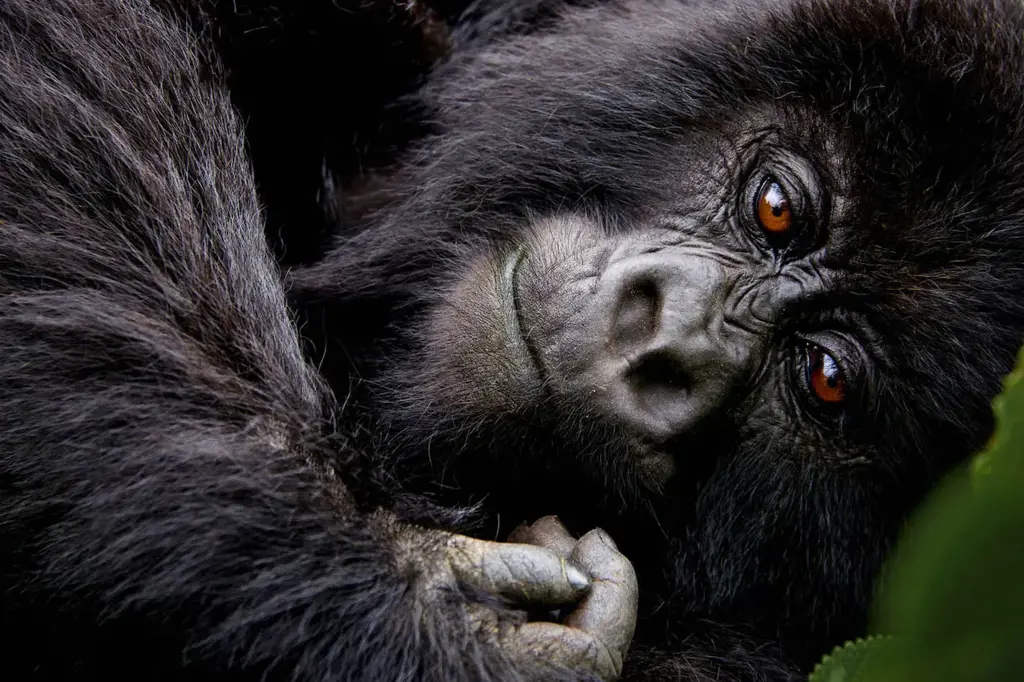
Gorilla trekking is a thrilling and adventurous activity, but it also requires careful planning and preparation. One important aspect of preparation is packing the right medical supplies and equipment to ensure a safe and enjoyable trekking experience. While gorilla trekking itself is not considered a high-risk activity, it is important to be prepared for any unforeseen circumstances and potential medical emergencies that may arise during the trek. In this article, we will discuss the specific medical supplies and equipment that you should consider including in your packing list for gorilla trekking.
- First Aid Kit: A well-stocked first aid kit is an essential item for any outdoor adventure, including gorilla trekking. Your first aid kit should include items such as bandages, adhesive tape, antiseptic wipes, gauze pads, adhesive bandages, tweezers, scissors, pain relievers, and any personal medications you may need. It is also advisable to include a list of emergency contact numbers and a basic manual on first aid procedures.
- Insect Repellent: In areas where gorilla trekking takes place, mosquitoes and other insects may be present. To protect yourself from insect bites and potential diseases such as malaria, it is important to carry a high-quality insect repellent. Look for a repellent that contains at least 20% DEET and apply it according to the instructions provided. Additionally, long-sleeved shirts, long pants, and socks can provide an extra layer of protection against insects.
- Sun Protection: The sun's rays can be quite strong in some gorilla trekking destinations, so it is important to pack adequate sun protection. Include items such as sunscreen with a high SPF, sunglasses with UV protection, and a wide-brimmed hat to protect your face and neck from the sun's rays. It is important to reapply sunscreen regularly, especially after sweating or swimming.
- Prescription Medications: If you have any pre-existing medical conditions or if you are taking any prescription medications, it is crucial to pack an adequate supply for the duration of your gorilla trekking trip. Make sure to bring enough medication to last the entire trip, plus a few extra days in case of any unexpected delays. It is also advisable to carry a copy of your prescriptions or a doctor's note explaining the need for the medication.
- Water Purification: It is essential to stay hydrated during gorilla trekking, as it can be physically demanding. However, the availability of clean drinking water may be limited in some areas. Packing a water purification system, such as water purification tablets or a portable water filter, can help ensure that you have access to safe drinking water throughout your trek.
- Footwear and Blister Care: Gorilla trekking often involves walking for long distances through uneven terrain and dense vegetation. Therefore, it is crucial to have comfortable and durable footwear that provides good ankle support. Additionally, it is advisable to pack blister care supplies such as moleskin or blister pads to prevent and treat any foot blisters that may occur during the trek.
- Hats and Rain Gear: Weather conditions can be unpredictable during gorilla trekking, so it is important to be prepared for rain or shine. Packing a lightweight rain jacket or poncho can help keep you dry in case of rain. Additionally, a wide-brimmed hat can provide protection against both the sun and rain.
While packing the right medical supplies and equipment is important, it is equally important to consult with a healthcare professional or travel medicine specialist before your gorilla trekking trip. They can provide personalized advice based on your individual health status and any specific healthcare concerns. Additionally, it is crucial to adhere to the guidelines and instructions provided by your tour guide or trekking company during the trek to ensure a safe and enjoyable experience.
In conclusion, including the right medical supplies and equipment in your packing list for gorilla trekking is crucial for a safe and enjoyable experience. By packing a well-stocked first aid kit, insect repellent, sun protection, prescription medications, water purification system, blister care supplies, and appropriate footwear and rain gear, you can be prepared for any potential medical emergencies or unforeseen circumstances that may arise during your gorilla trekking adventure. Remember to consult with a healthcare professional before your trip and follow the guidance provided by your tour guide or trekking company to ensure a safe and memorable experience.
The Ultimate Guide to Packing for Your First Trip to Europe
You may want to see also

Are there any restrictions or guidelines on what can be packed for a gorilla trekking trip in terms of weight or size?
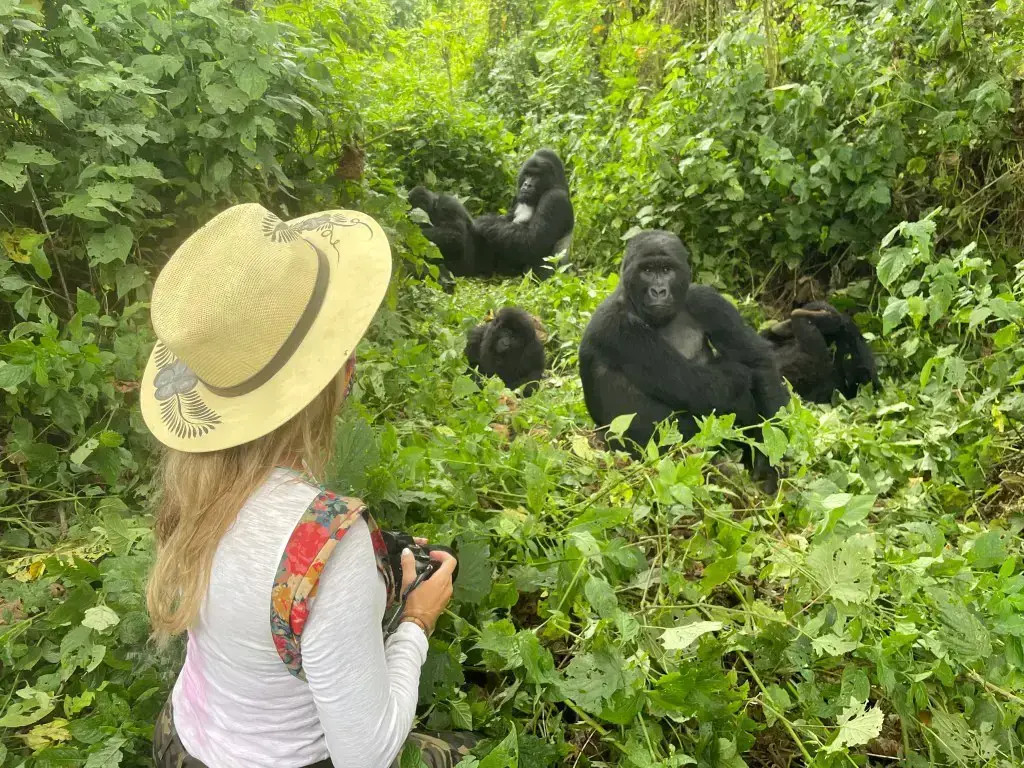
When preparing for a gorilla trekking trip, it is important to pack appropriately to ensure a smooth and enjoyable experience. While there are no specific restrictions on weight or size for items that can be packed, there are some guidelines and recommendations to consider.
- Sturdy backpack: A sturdy backpack is essential for carrying all your gear during the trek. It should be comfortable to wear and have enough capacity to hold all your essentials.
- Clothing: Depending on the weather and terrain, it is important to pack appropriate clothing. Lightweight, breathable, and quick-drying clothing is recommended. Layers are also essential as the temperature can vary throughout the day. A waterproof jacket or poncho is also recommended in case of rain.
- Walking shoes: Good quality, comfortable walking shoes are a must for gorilla trekking. They should have a good grip and provide ankle support to navigate the rugged terrain.
- Binoculars and camera: To fully appreciate the incredible sights and wildlife during the trek, it is recommended to bring binoculars and a camera. Binoculars will allow you to observe the gorillas and other wildlife from a distance, while a camera will help you capture the memorable moments.
- Snacks and water: It is important to stay hydrated throughout the trek, so bringing a reusable water bottle is essential. Additionally, bringing some snacks like energy bars or trail mix is recommended to keep your energy levels up during the hike.
- Insect repellent and sunscreen: Gorilla trekking often takes place in forested areas where insects and sun exposure can be a concern. Packing insect repellent with DEET and a high SPF sunscreen will help protect you from bites and sunburn.
- Medications and first aid kit: If you have any pre-existing medical conditions or require specific medications, be sure to pack them. It is also recommended to bring a basic first aid kit with essentials such as band-aids, antiseptic cream, and pain relievers.
- Other essentials: Don't forget to pack other essentials such as a hat to protect you from the sun, sunglasses to protect your eyes, a flashlight or headlamp for any early morning or late evening treks, and a small towel to wipe away sweat or rain.
While there are no strict weight or size restrictions for packing, it is important to remember that you will be carrying your backpack throughout the trek. Therefore, it is recommended to pack light and only bring the essentials to avoid unnecessary strain and discomfort.
In conclusion, when preparing for a gorilla trekking trip, it is important to pack appropriately. Consider the weather and terrain, and pack necessary items such as a sturdy backpack, appropriate clothing, walking shoes, binoculars, camera, snacks, water, insect repellent, sunscreen, medications, and other essentials. Keep in mind the weight and size of your backpack to ensure a comfortable trekking experience. Happy trekking!
Essential Items to Include in Your Packing List for a Pigeon Forge Trip
You may want to see also
Frequently asked questions
When gorilla trekking, it is important to wear comfortable and sturdy clothing. You should wear long-sleeved shirts, long pants, and closed-toe shoes or boots to protect yourself from insects and vegetation. Additionally, it is recommended to wear layers, as the weather can change quickly in the mountains where gorillas are found.
When choosing a backpack for gorilla trekking, it is best to pick one that is lightweight and comfortable to carry. Look for a backpack with padded straps and good back support. It should be spacious enough to carry essentials such as water, snacks, a rain jacket, and any other personal items you may need during the trek.
If you are planning to capture the incredible moments of gorilla trekking, it is recommended to bring a good quality camera. A DSLR or mirrorless camera with a zoom lens is ideal for capturing both close-up and distant shots of the gorillas. Make sure to also pack extra batteries and memory cards to ensure you don't miss any shots.
In addition to clothing and camera equipment, there are a few other essential items you should pack for gorilla trekking. These include sunscreen, insect repellent, a hat, sunglasses, a first aid kit, and a waterproof jacket. It is also important to bring plenty of water and snacks to stay hydrated and energized during the trek.



